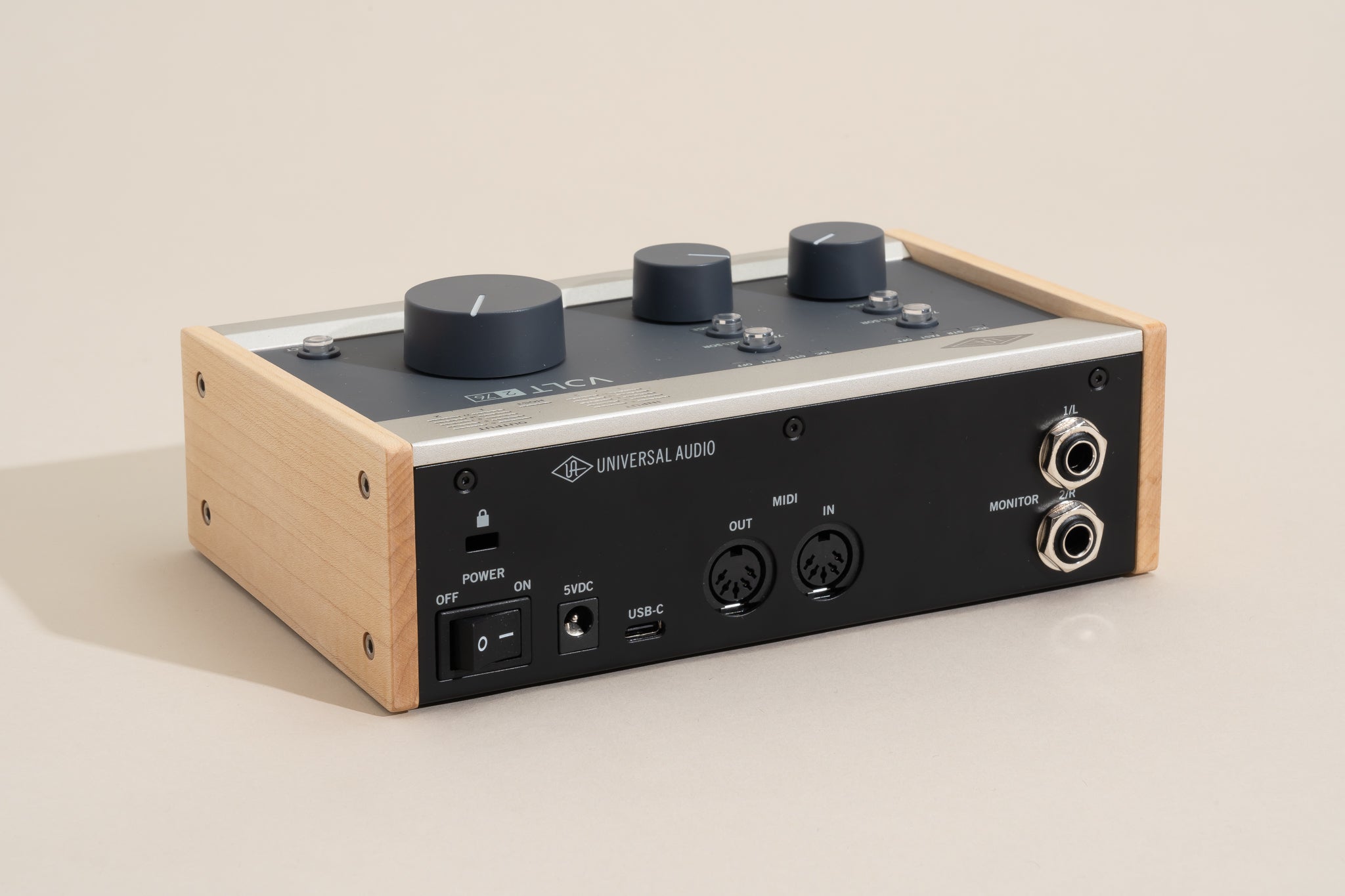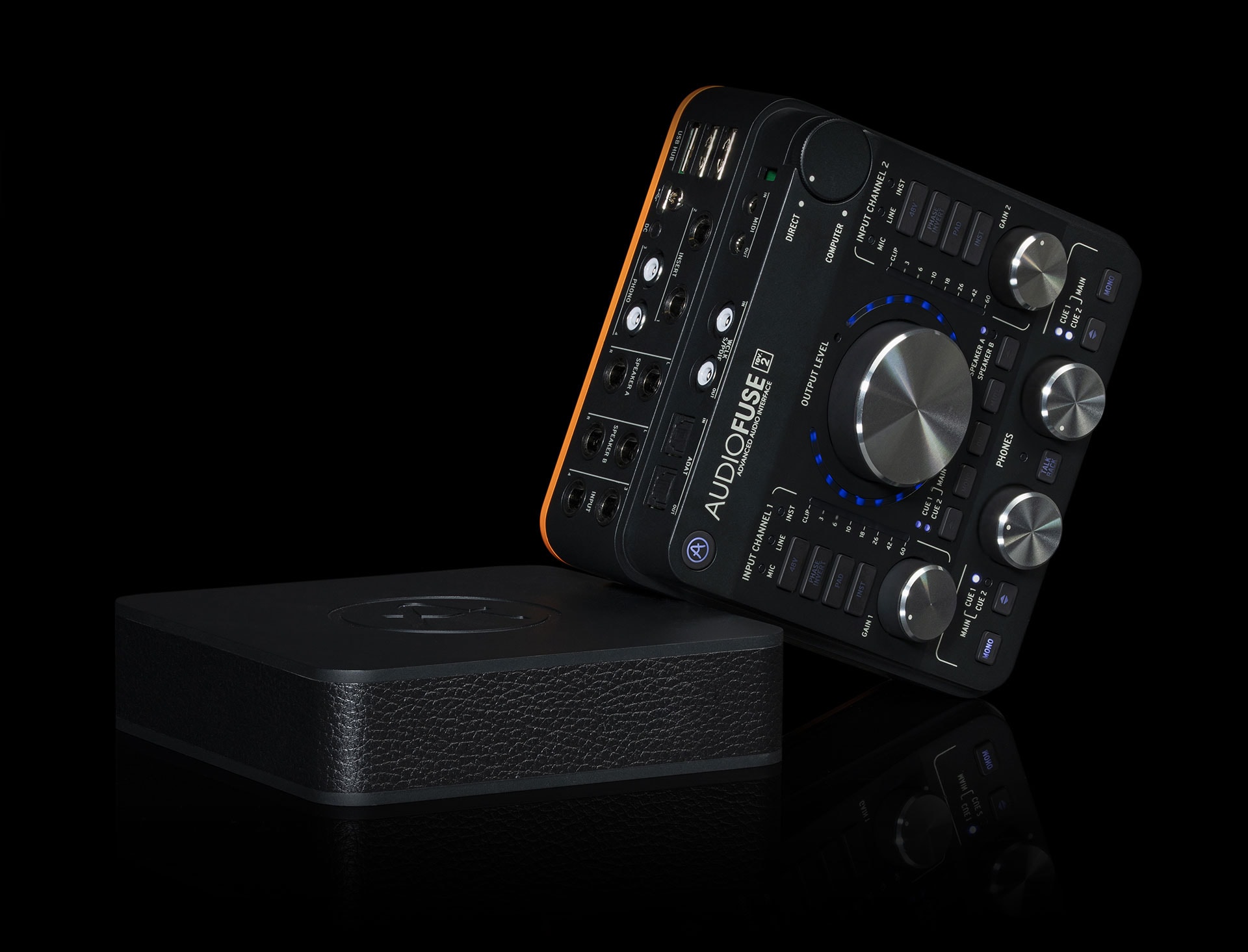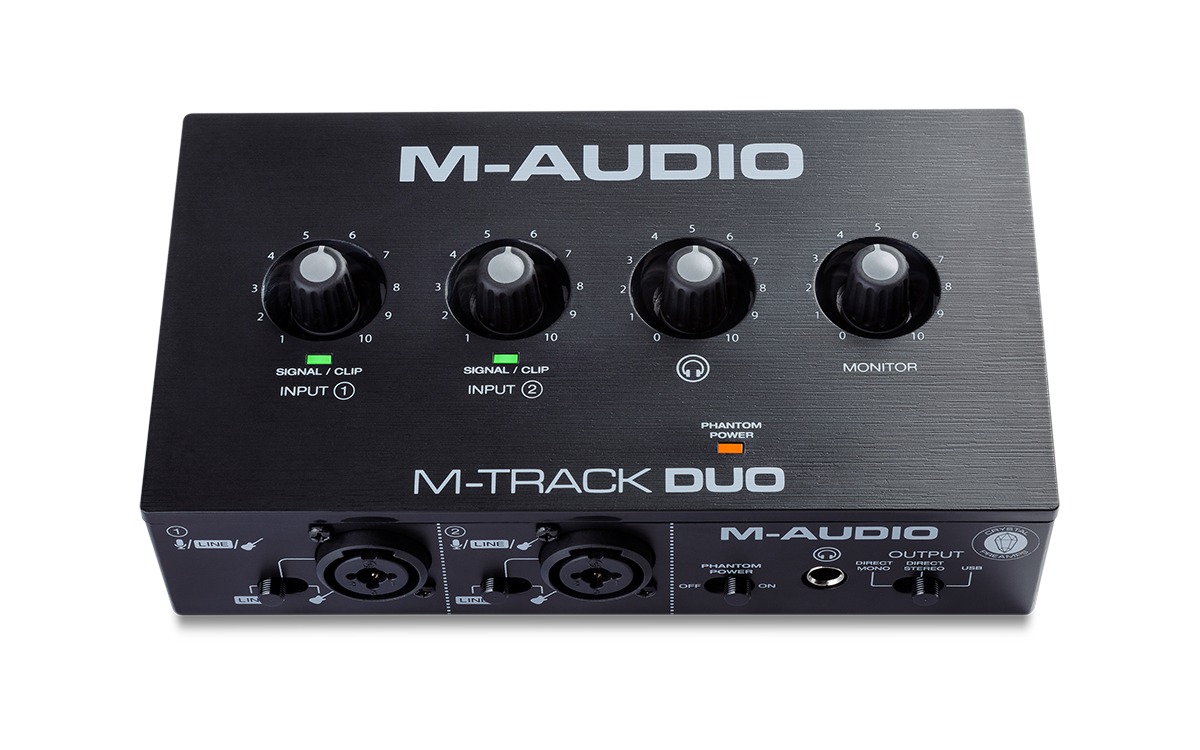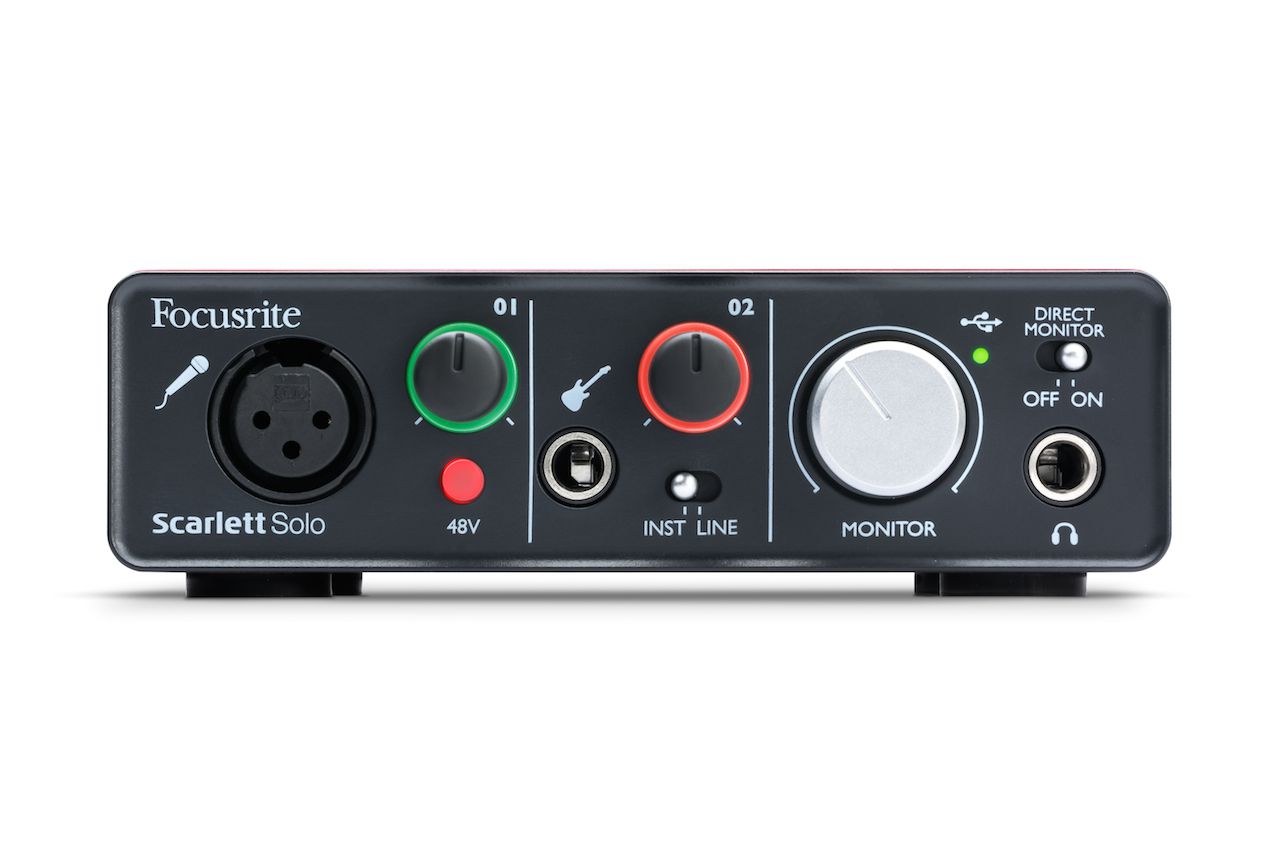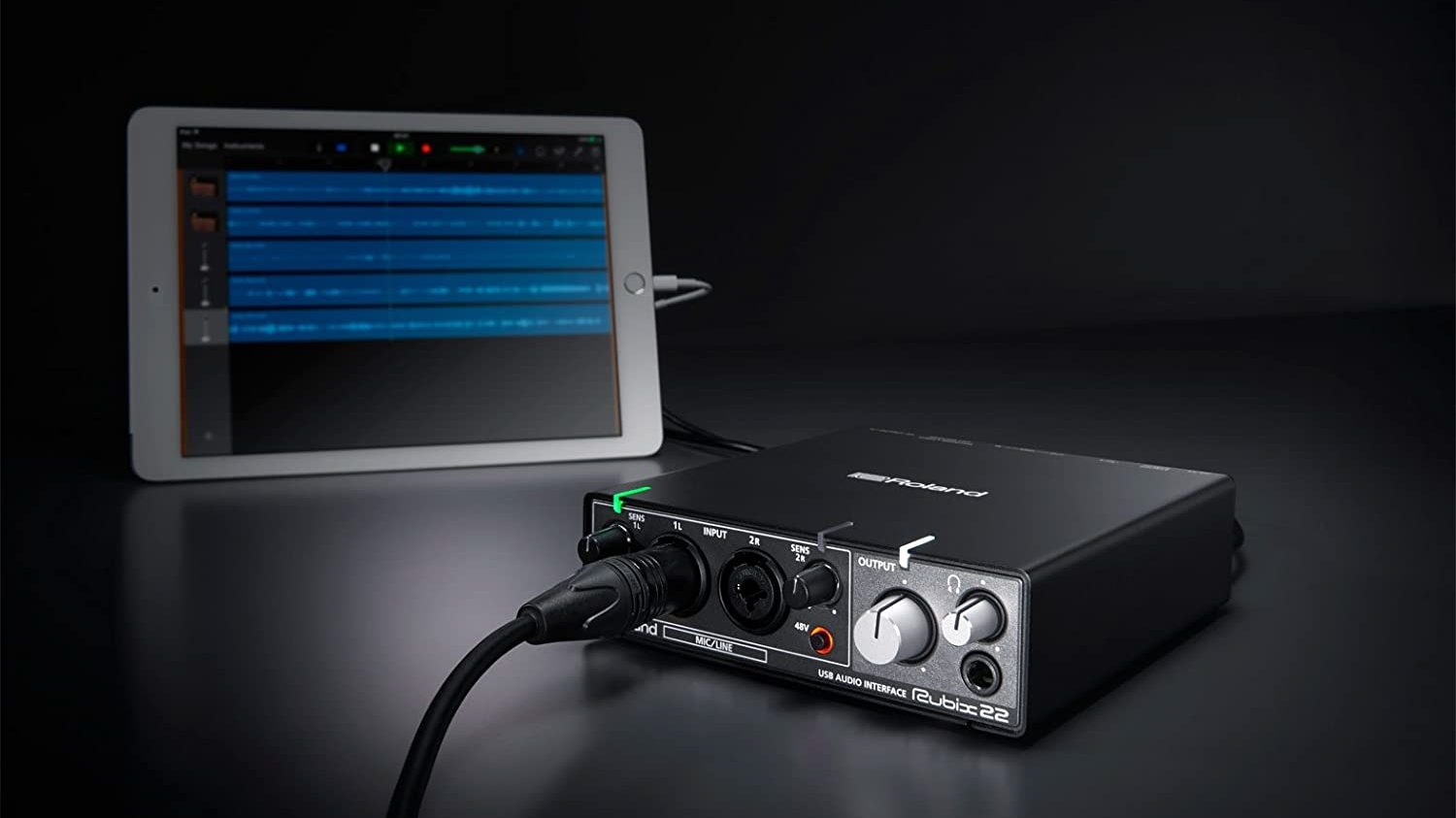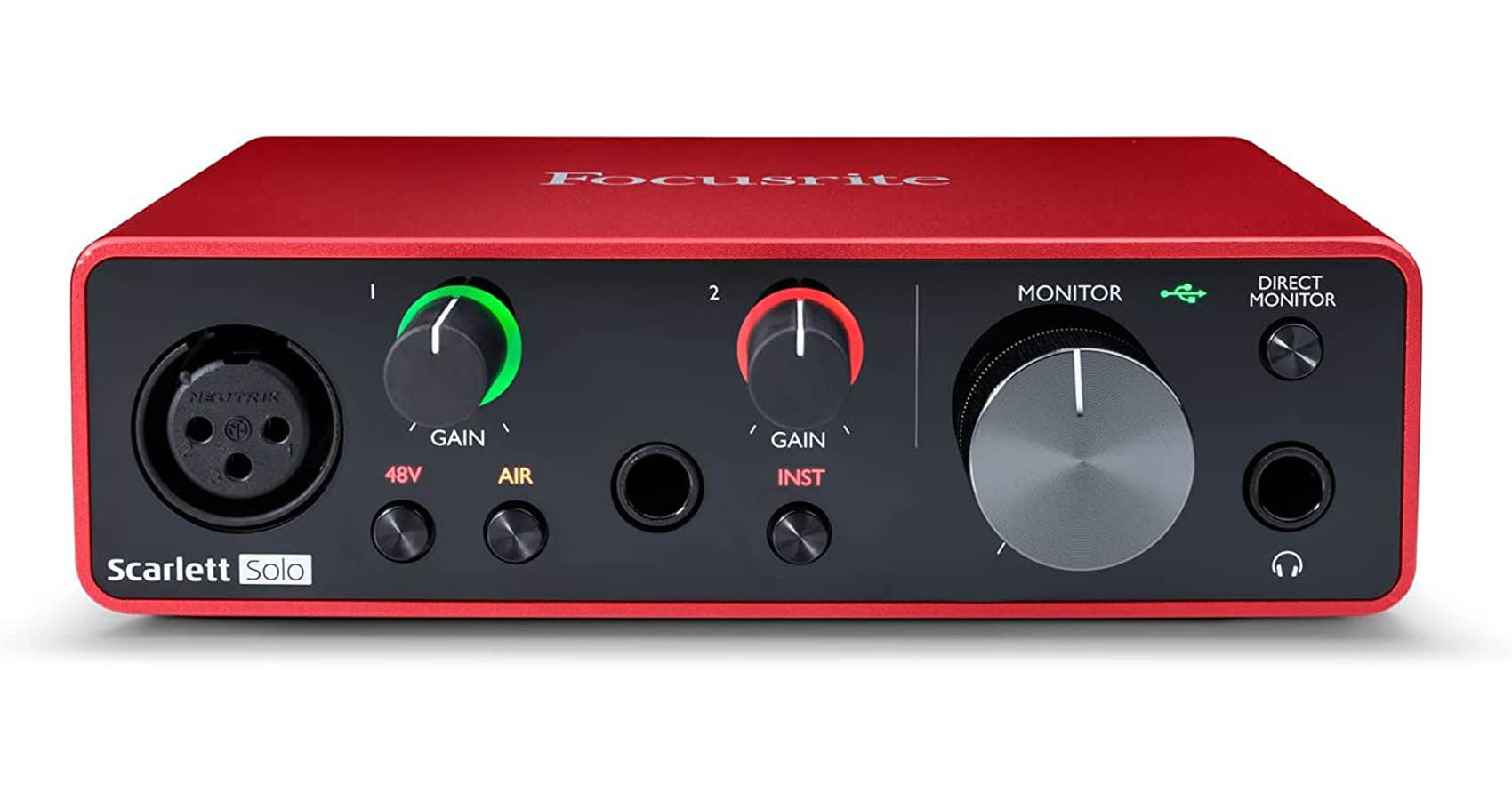Home>Production & Technology>Audio Interface>What Is The Best Firewire Audio Interface


Audio Interface
What Is The Best Firewire Audio Interface
Published: February 4, 2024
Looking for the best firewire audio interface? Find high-quality options with advanced features and exceptional sound clarity at affordable prices in our comprehensive guide.
(Many of the links in this article redirect to a specific reviewed product. Your purchase of these products through affiliate links helps to generate commission for AudioLover.com, at no extra cost. Learn more)
Table of Contents
Introduction
Welcome to our comprehensive guide on firewire audio interfaces. If you’re a musician, podcaster, or audio engineer looking to improve your audio recording and playback quality, a firewire audio interface is an essential piece of equipment to consider. In this article, we will explore the ins and outs of firewire audio interfaces, their benefits, and what to consider when choosing the best one for your needs.
A firewire audio interface is a device that allows you to connect your audio sources, such as microphones and instruments, to your computer for recording, playback, and processing. It acts as the bridge between your analog audio signals and your digital audio workstation (DAW).
Firewire technology offers several advantages over other connection types, such as USB, when it comes to audio interfaces. Firewire interfaces provide high-speed data transfer, resulting in lower latency and better overall performance. They also offer stable and reliable connections, which are crucial for professional audio production.
In recent years, firewire has become less common in consumer-grade devices, with the rise of USB and Thunderbolt interfaces. However, firewire is still widely used in professional audio settings due to its robustness and compatibility with older equipment.
In this guide, we will discuss the benefits of using a firewire audio interface, including its superior speed and stability. We will also explore the important factors to consider when choosing a firewire audio interface, such as the number of inputs and outputs, preamp quality, and compatibility with your computer system.
Furthermore, we will highlight some of the top firewire audio interfaces currently available on the market, including their key features and specifications. Whether you’re a beginner or a seasoned professional, our comprehensive comparison will help you make an informed decision when purchasing a firewire audio interface.
So, if you’re ready to take your audio recording and production to the next level, let’s dive into the world of firewire audio interfaces and discover the best option for your specific needs.
What is a Firewire Audio Interface?
A firewire audio interface is a device that serves as the bridge between your audio sources, such as microphones, instruments, and other audio equipment, and your computer. It allows you to capture, process, and playback audio signals with high quality and low latency. Firewire interfaces use the Firewire connection technology, also known as IEEE 1394, to transfer data between the audio interface and your computer.
Unlike USB audio interfaces, firewire interfaces offer several advantages in terms of speed, stability, and overall performance. Firewire provides faster data transfer rates, which translates to lower latency and the ability to handle a larger number of audio channels simultaneously. This makes firewire particularly well-suited for professional audio applications where real-time monitoring and low latency are crucial.
Firewire audio interfaces come in various shapes and sizes, ranging from portable and compact units suitable for mobile recording to larger rack-mounted units with multiple inputs and outputs for studio use. They typically include a combination of microphone preamps, line inputs, instrument inputs, and outputs for connecting speakers or headphones.
One of the key features of firewire audio interfaces is their ability to provide phantom power to condenser microphones. Phantom power is required to power the internal amplifier in condenser microphones, and firewire interfaces often have dedicated switches to activate or deactivate this feature on specific input channels.
Firewire audio interfaces are compatible with both Windows and Mac operating systems, although it’s essential to ensure that your computer has a firewire port or that you have a firewire-to-USB adapter if you’re using a newer computer that lacks a firewire port.
It’s worth noting that firewire technology has become less prevalent in consumer-grade devices in recent years, with the rise of USB and Thunderbolt interfaces. However, firewire remains widely used in professional audio settings due to its stability, reliable performance, and compatibility with older equipment.
In summary, a firewire audio interface is a device that enables you to connect your audio sources to your computer for high-quality audio recording, processing, and playback. With its faster data transfer rates, low latency, and reliable performance, a firewire interface is an excellent choice for musicians, podcasters, and audio engineers looking to achieve professional-grade audio production.
Benefits of Using a Firewire Audio Interface
Using a firewire audio interface for your audio recording and production endeavors comes with several significant benefits. Let’s explore some of the key advantages that make firewire interfaces a popular choice among musicians, podcasters, and audio professionals:
1. High-Speed Data Transfer: Firewire technology offers faster data transfer rates compared to other connection types, such as USB. This high-speed data transfer allows for lower latency, which is essential for real-time monitoring and recording without noticeable delays. The faster data transfer also enables the handling of a greater number of audio channels simultaneously.
2. Low Latency Performance: Achieving low latency is crucial when tracking audio in real-time or playing virtual instruments through software plugins. Firewire interfaces have proven to deliver reliable low latency performance, ensuring a seamless recording experience without any noticeable delay between playing an instrument or speaking into a microphone and hearing the audio feedback in headphones or monitors.
3. Stable and Reliable Connection: Firewire interfaces are known for their stable and consistent connections, which are essential for professional audio production. Unlike USB connections that may suffer from occasional dropouts or interruptions, firewire provides a reliable connection that minimizes audio glitches or signal loss.
4. Compatibility with Older Equipment: Many musicians and recording studios have a wealth of analog and digital audio gear that may have firewire connectivity. Firewire audio interfaces offer compatibility with this legacy equipment, allowing users to incorporate and integrate their existing gear seamlessly.
5. Expanded Input/Output Capacity: Firewire interfaces often come with a generous amount of inputs and outputs, allowing for greater flexibility in recording and routing audio signals. This versatility is particularly beneficial for users who need to connect multiple microphones, instruments, and outboard gear simultaneously.
6. Dedicated Phantom Power: Firewire interfaces typically feature dedicated phantom power switches, allowing you to supply the necessary power for condenser microphones without the need for external power supplies. This convenient feature simplifies the setup process and ensures that your condenser microphones receive the required power for optimal performance.
7. Durable and Long-Lasting: Firewire interfaces are known for their durability and longevity. They are designed to withstand the rigors of professional use and are built with high-quality components that ensure a long lifespan, making them a wise investment for those who require a reliable audio interface for years to come.
In summary, using a firewire audio interface translates into high-speed data transfer, low latency performance, stable connections, compatibility with older equipment, expanded I/O capacity, and dedicated phantom power. These benefits make firewire interfaces an excellent choice for professional audio production, ensuring reliable and high-quality results throughout your recording and production process.
Factors to Consider When Choosing a Firewire Audio Interface
When selecting a firewire audio interface, there are several essential factors to consider to ensure that it meets your specific needs and requirements. By taking these factors into account, you can make an informed decision and choose the right firewire interface for your audio production setup. Let’s explore these factors:
1. Number of Inputs and Outputs: Consider the number of inputs and outputs you require for your audio recording and production. Determine how many microphones, instruments, and other audio sources you need to connect simultaneously. Ensure that the firewire interface provides enough inputs and outputs to accommodate your setup, allowing for future expansion if needed.
2. Preamp Quality: Pay attention to the preamps included in the firewire interface. Preamps are crucial for capturing clean and high-quality audio signals from microphones and instruments. Look for interfaces with high-quality preamps to ensure excellent sound reproduction and minimal noise or distortion.
3. Sampling Rate and Bit Depth: The sampling rate and bit depth determine the audio resolution and fidelity. Higher sampling rates and bit depths result in more accurate and detailed audio recordings. Consider the maximum sampling rate and bit depth supported by the firewire interface to ensure it meets your desired audio quality standards.
4. Compatibility: Ensure that the firewire interface is compatible with your computer system. Check for compatibility with your operating system, whether it’s Windows or Mac. Additionally, verify if your computer has a firewire port or if you will need a firewire-to-USB adapter if your computer lacks a native firewire connection.
5. Workflow and Features: Consider the workflow and features that will enhance your audio production process. Look for features like hardware monitoring, direct monitoring, integrated DSP effects, and multiple headphone outputs. Consider your specific needs and preferences to determine which features are essential for your workflow.
6. Build Quality and Durability: Pay attention to the build quality and durability of the firewire interface. Consider the materials used, the overall construction, and user reviews to ensure that the interface is built to withstand frequent use and last a long time. This is especially important if you plan to use the interface in a professional studio or on the road.
7. Budget: Set a budget for your firewire audio interface and consider options within your price range. Firewire interfaces can vary significantly in price, depending on the features and specifications. While it’s important to consider your budget, it’s also crucial to strike a balance between affordability and the necessary features and quality required for your audio production needs.
8. Reviews and Recommendations: Read reviews and seek recommendations from trusted sources, such as audio professionals, musicians, and online communities. Hearing about others’ experiences with specific firewire interfaces can provide valuable insights and help you make an informed decision.
By considering these factors, you can narrow down your options and select the firewire audio interface that best suits your needs. Remember, every audio production setup is unique, so it’s crucial to find an interface that aligns with your specific requirements and preferences.
Top Firewire Audio Interfaces on the Market
Now that we have explored the important factors to consider when choosing a firewire audio interface, let’s take a look at some of the top options available on the market. These interfaces have been highly regarded by audio professionals for their performance, features, and reliability:
1. Focusrite Saffire Pro 40: The Focusrite Saffire Pro 40 is a popular choice among audio professionals. It features eight high-quality preamps, flexible routing options, and a comprehensive software mixer. With its low-latency performance and excellent sound quality, the Saffire Pro 40 is a versatile interface suitable for both recording and mixing.
2. PreSonus StudioLive 32R: The PreSonus StudioLive 32R is a rack-mountable firewire interface that offers 32 analog inputs and 18 outputs. It comes with high-quality XMAX preamps, extensive DSP processing, and intuitive control software. The StudioLive 32R is known for its powerful mixing capabilities, making it an ideal choice for live sound applications.
3. MOTU 828es: The MOTU 828es is a feature-packed firewire interface with 28 inputs and 32 outputs. It boasts high-end DACs, ESS Sabre32 Ultra converters, and two onboard DSP processors for latency-free monitoring and effects processing. The 828es also offers Thunderbolt connectivity, expanding its compatibility beyond firewire.
4. RME Fireface UCX: The RME Fireface UCX is a compact and portable firewire interface known for its pristine audio quality and low-latency performance. It features high-quality mic preamps, extensive I/O options, and powerful onboard DSP effects. With its reliable performance and robust build quality, the Fireface UCX is favored by professional audio engineers.
5. PreSonus FireStudio Project: The PreSonus FireStudio Project is a cost-effective firewire interface that offers versatility and quality. It provides eight analog inputs, including two XMAX preamps, and ten outputs for flexible recording and monitoring. The FireStudio Project is known for its user-friendly controls and compatibility with both Windows and Mac systems.
6. Universal Audio Apollo Firewire: The Universal Audio Apollo Firewire interface combines pristine audio conversion, powerful DSP processing, and seamless integration with Universal Audio’s UAD plugins. It offers excellent sound quality and low-latency performance, making it a popular choice among musicians and producers who demand high-quality audio processing.
7. Mackie Onyx 800R: The Mackie Onyx 800R is a rack-mountable firewire interface with eight high-quality boutique-grade preamps. It offers extensive routing options, additional digital inputs and outputs, and flexible monitoring capabilities. With its rugged build and transparent sound reproduction, the Onyx 800R is well-suited for both studio recording and live sound applications.
These are just a few examples of the top firewire audio interfaces available on the market. Each interface offers unique features, specifications, and price points, so it’s important to consider your specific needs and budget. Take the time to research and compare different options to find the firewire interface that best fits your audio production requirements.
Comparison of Firewire Audio Interfaces
When considering firewire audio interfaces, it’s helpful to compare different models to find the one that suits your specific needs. Let’s compare some key features and specifications of popular firewire interfaces:
1. Focusrite Saffire Pro 40: This interface offers eight high-quality preamps, 20 inputs, and 20 outputs. It features a dedicated DSP mixer for low-latency monitoring. The Pro 40 also supports sampling rates up to 192kHz and comes with a comprehensive software bundle.
2. PreSonus StudioLive 32R: The StudioLive 32R provides 32 inputs and 18 outputs, with 24-bit/96kHz audio quality. It features flexible routing, remote control capabilities, and onboard DSP for effects processing. This interface is suitable for live sound applications due to its powerful mixing capabilities.
3. MOTU 828es: Offering 28 inputs and 32 outputs, the MOTU 828es supports sampling rates up to 192kHz. It comes with high-end converters and onboard DSP for latency-free monitoring. The 828es also offers Thunderbolt connectivity in addition to firewire.
4. RME Fireface UCX: This interface provides high-quality audio conversion, with 18 inputs and 18 outputs. It features built-in DSP effects, low-latency performance, and support for sampling rates up to 192kHz. The Fireface UCX also offers USB connectivity in addition to firewire.
5. PreSonus FireStudio Project: The FireStudio Project offers eight inputs, including two high-quality preamps, and ten outputs. It supports sampling rates up to 96kHz and features flexible routing options. This interface is known for its affordability and user-friendly controls.
6. Universal Audio Apollo Firewire: The Apollo Firewire provides high-quality audio conversion with four inputs and six outputs. It offers real-time UAD processing for running UAD plugins and supports sampling rates up to 192kHz. The Apollo interface is renowned for its exceptional sound quality and integration with Universal Audio’s plugin ecosystem.
7. Mackie Onyx 800R: With eight boutique-grade preamps and 16 inputs and outputs, the Onyx 800R delivers transparent sound reproduction. It features flexible routing options, additional digital I/O, and direct monitoring capabilities. This interface is suitable for both studio recording and live sound applications.
When comparing firewire audio interfaces, consider the number of inputs and outputs, preamp quality, sampling rates, onboard DSP capabilities, and compatibility with your computer system. It’s also important to take into account your specific audio production requirements and budget to find the interface that best meets your needs.
Remember, this is just a brief comparison, and each interface has its own unique set of features and specifications. Take the time to research and read user reviews to gather more detailed information and make an informed decision when selecting a firewire audio interface.
Conclusion
Firewire audio interfaces provide an excellent solution for musicians, podcasters, and audio professionals looking to achieve high-quality audio recording and production. These interfaces offer several benefits, including faster data transfer, low latency performance, stability, and compatibility with older equipment.
When choosing a firewire audio interface, consider factors such as the number of inputs and outputs, preamp quality, sampling rates, compatibility, and your specific workflow requirements. By taking these factors into account, you can select an interface that aligns with your needs and budget.
Some of the top firewire audio interfaces on the market include the Focusrite Saffire Pro 40, PreSonus StudioLive 32R, MOTU 828es, RME Fireface UCX, PreSonus FireStudio Project, Universal Audio Apollo Firewire, and Mackie Onyx 800R. Each of these interfaces offers unique features and specifications to suit various audio production setups.
Remember to read reviews and recommendations, as well as compare different models, to make an informed decision. Ultimately, the right firewire audio interface will provide you with the necessary tools and capabilities to achieve professional-grade audio recordings and productions.
Whether you are a musician, podcaster, or audio engineer, investing in a firewire audio interface is a wise decision to enhance your audio production capabilities. With its high-speed data transfer, low latency performance, and reliable connectivity, a firewire interface can elevate your sound quality and streamline your workflow.
So, take the time to explore the options, consider your requirements, and choose the firewire audio interface that best suits your needs. With the right interface in your setup, you can bring your creative ideas to life and achieve exceptional audio results.


